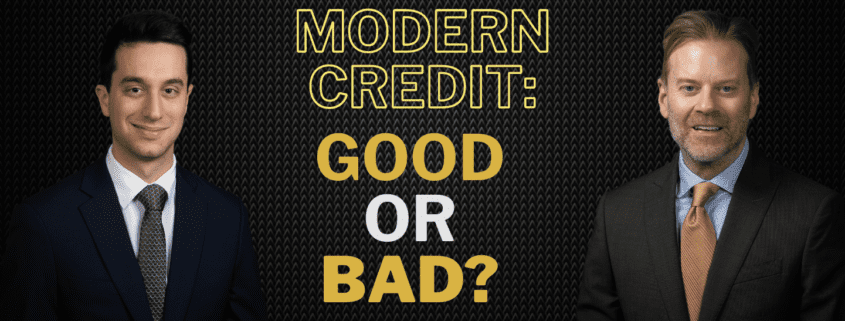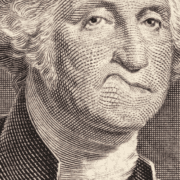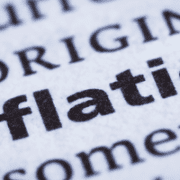What is good debt?
As total outstanding debt balloons the question arises: are all acts of modern debt and credit creation bad? What is the function of a true intermediary in today’s modern economy? Jeff Deist and Ben Nadelstein discuss the role of intermediaries in today’s economy.
Connect with Jeff and Monetary Metals on X: @JeffDeist @Monetary_Metals
Additional Resources
Start Earning Interest on Gold
The Case for Gold Yield in an Investment Portfolio
Podcast Chapters
00:00 – What is Good Debt?
00:39 – Global Debt Levels
04:22 – The Problem with Debt
05:54 – Positive Interest Rates
07:16 – Interest Rates as Exchange Ratios
09:51 – Commodity Credit vs Circulation Credit
11:47 – True Financial Intermediaries
13:00 – Modern Banking
16:43 – Promoting Savings
18:34 – Irregular Deposits
21:00 – How to Earn a Yield on Gold
Transcript:
Ben Nadelstein:
Welcome back to the Gold Exchange podcast. My name is Benjamin Nadelstein. I’m joined by the general counsel of Monetary Monetary Metals, Jeff Deist. Jeff, let’s talk about good debt and a little bit about bad debt today.
Jeff Deist:
Yeah, absolutely. It’s obviously one of the biggest topics in the world today, in the financial world, especially if we think about the global financial crisis of 2008. Just before that, in 2007, there was about 140 something trillion dollars worth of global worldwide debt. So what do we mean by that? We mean sovereign debt at the government level, we mean corporate debt, and we mean individual household debt as well. So 100 4150 trillion dollars back in 2007, which wasn’t all that long ago. Fast forward to today. After COVID, there’s more than $300 trillion worth of global debt. So what that means is that nothing in terms of what the Fed or other central banks did at following that crisis, did anything to deal with the underlying problem, which is just that there’s too much debt. And what do I mean by that? I mean that I don’t think there’s any scenario by which we could say that the productive capacity of the world, or of individuals or of corporations or not even the productive capacity, but the capacity of governments to tax their citizenry, I don’t think anyone would argue that that has more than doubled just since the 2008 crisis.
So I think we can just through that lens, understand there’s just way too much debt. And we’re seeing that anecdotally on a variety of levels in the west. I mean, just the United States, for example, we’re seeing huge numbers of auto loan delinquencies. We’re seeing the average car payment hovering around something like $800 a month for people. People are struggling, obviously, to pay for food and other necessities. We’re seeing that credit card debt has exploded relative to household savings just in the couple of years since COVID So we do see some shakiness at the consumer level and at more the corporate level in the US. I mean, we see real estate debt, especially commercial real estate debt, facing a possible apocalypse. And at the bank level, the institutional level in the United States, I mean, we have lots and lots of banks like Silicon Valley bank, who similarly bought up a lot of US treasury debt. Unfortunately, they bought that debt which was supposed to be safe, which was supposed to be prudent. They bought it back when that debt was maybe paying just two 3% set interest. So when the Fed worked to raise treasury rates up above 5%, then all of a sudden those bonds that banks own became worth far less.
And as a result, a lot of us commercial banks are really technically insolvent if they had to mark to market all of their bond portfolio. That’s why in effect the Fed created its temporary bank funding program, so that banks could borrow for up to a year from the Fed with kind of a wink and a node. And the Fed would say, well, your bond debt, even though its only worth 60% of x because of interest rates going up, were going to give you collateral for 100% of x. So its clear that there is a debt crisis, I think, in the west. I don’t think that’s too strong of a term. I know that thats been overstated in the past. People worry a lot about that 30 plus trillion of Uncle Sam’s treasury debt itself. But really at every level, at the corporate level, the household level, at the individual level, consumer debt, student loan debt, credit cards, auto loans, there really is just too much debt relative to the productive capacity, the income capacity of all of these debtors to service it. And I would argue that the fundamental problem, which is something that is I think, very much related to what monetary metals does as a business, the fundamental problem is that debt is being created out of thin air.
The latin term for this is ex nihilo. In other words, banks and other non financial intermediaries, in the true sense of that are able to create credit at will. And as a result, nobody has to give anything up. There doesn’t have to be a saver on the other end, actually giving up the present consumption or current use of his or her resources to make this possible. So we have a real problem not only with central banks in the west, but I think commercial banking is its practice as well.
Ben Nadelstein:
In very basic terms, interest rates are supposed to reflect things about time preference as well as savings preferences. And it seems very odd that in general, for decades at a time, lets say, citizens of Japan had a 0% interest rate. Is it possible that everyone in Japan suddenly felt this way about savings and time preference? Its possible, but it seems very unlikely, especially for an extended period of time with no real exogenous circumstance that could make you say, okay, you know, the end of the world is happening. Maybe people want to dissave, right? Their time preference inverts. But most people don’t see how a 0% interest rate affects them personally because they don’t have a 0% interest rate on their own time, on their own goods, and on their own preferences. Most people have a positive interest rate, right? They value things in the future more than they value things in the present. And that’s why non bank intermediaries do tend to have actual positive stable interest rates, because they reflect how most people feel about their present goods compared to their future goods.
Jeff Deist:
Well, if we read the austrian school, we’ll understand that interest rates always have to be positive, both nominally and, well, oftentimes in real terms. But nominally interest rates always have to be positive. We understand this very simply. No one will give you $1,000 today in exchange for $1,000 in five years because there’s a lot of uncertainty as to whether you’ll get repaid. You don’t know how much that $1,000 is worth in five years. So both borrowers and savers always want a positive rate of interest. That’s just something we can know axiomatically from how humans operate. We value something today more than in five years from now. That’s why you’d rather have your dream house at age 40 than age 90, because at 90 the, your enjoyment of that is very uncertain and probably quite limited. So we know the interest rate should be positive. But moreover, we also know, I think, axiomatically, deductively, theoretically, how interest rates should work. Most people think of them as prices, the costs of borrowing money. But its really, its an exchange ratio. Thats what Mises said. He said borrowers and savers meet based on their relative preferences. Some people who have saved up some money say hey, I’m in a position where I can lend this out to other people in exchange for a return, because I’m taking a risk that I won’t get paid back.
And other people say hey, I’d really like to purchase something now, whether that’s capital goods from my factory, whether that’s an automobile, whatever, a student loan, whatever it might be, and I’m willing to pay a rate of interest in order to have that consumption now. So in the ideal scenario, those two time preferences meet in the middle and come up with some sort of interest rate. And we have to understand, it wasn’t that long ago, certainly within our great grandfather’s lifetimes, maybe even our grandfather’s lifetimes, where borrowing money was pretty localized. My grandfather, for example, went to a local bank if he needed a loan. This is before the period of really aggressive credit scoring. And FICO. FICO didn’t really come into broad use until the late 1980s, eighties. And so, in part, his ability to borrow money was based on sort of his reputation. He had a stable job. He was known in that local bank community, but also by how much money that local bank had in terms of deposits available from the local savers to make that loan possible. Now, obviously, there’s a whole debate around fractional reserve banking and the degree to which banks should lend out reserves that they don’t have 100% of on hand to pay back.
That goes to a lot of questions. It goes to the idea of demand deposits versus time deposits, for example. But I think what’s really fundamental here, and mises talks about this in his great book, the Theory of Money and credit, which is over 100 years old now. It came out in 1912, but most of it is still very, very applicable day. Very prescient book. He basically says there’s two kinds of credit. There’s commodity credit and there’s circulation credit. And commodity credit requires someone to actually give up real resources, to give up present consumption, to give up the use of money so that somebody else can borrow, versus circulation credit, which is when banks, commercial banks, create credit on a fractional basis. Again, ex nihilo is the latin phrase for it. And so they’re able to provide loans and credit to people without a corresponding debt, or, excuse me, a corresponding saver on the other side of that debt. So that’s really two radically different functions. And if we think about what Monetary Metals does, we’re providing gold financing for productive use in businesses. That could be a mine, that could be a refiner, that could be inventory for jewelry.
But what’s so important to understand is that we’re doing this as a true intermediary. In other words, we’re bringing together borrowers and savers who want to use gold. And the idea here is that we’re trying to pull some of that moneyness out of gold to put gold to productive use, again, financing businesses, but also paying a yield to the saver. I would argue that this is a very noble function. It’s a big part of monetary metals mission beyond. Obviously, we have, our core mission is to make a profit and to provide value for our own investors, our own shareholders. But we do have a mission to bring some of that moneyness back to gold. And part and parcel of that mission is that we’re a true intermediary. In other words, we use real resources. People who invest gold in monetary metals programs, they forego the use of that, the enjoyment of that metal for a period so that the lessor or the, excuse me, lessee or the borrower can use it immediately. And there are analogs in the economy that people might understand. I would argue that insurance companies are true financial intermediaries. A pawn broker for example, serves a noble purpose in one sense, and they’re a true financial intermediary.
And what I mean by that is Monetary Metals. Like a pawn broker, we don’t extend credit, we don’t create it out of thin air, and we don’t create money. So we’re performing that ultra important function of providing a platform, a resource, so that savers and borrowers can come together, meet in the middle and discover an interest rate using what we would argue is real money gold. That’s used to be what banks did in this country and they just dont do it anymore. And I think thats been a real tragedy for the american economy, for the american consumer.
Ben Nadelstein:
Trey, I think one way to conceptualize this is lets take a platform like Uber connects drivers with people who want a taxi rider or a ride sharing service. And of course Uber makes its money by connecting those, by being a financial intermediary in some sense between two partners, people who want to provide rides and people who need them. Very basic business model. No one thinks that theyre creating people out of thin air or rides out of thin air. Theres two goods or services at the end of either of the transaction. And then theres a small margin that Uber ideally will take as profit versus something like, lets say a student going into debt and getting a college loan that they know is at the end of the day backed up by Uncle Sam. And if that debt needs to get paid by everyone, okay, well if it doesn’t get paid, we can just rip it up or shred it away. There’s not a true understanding of I need to actually dissave or pay in some meaningful sense. It kind of feels like free money out of thin air because you know that the borrower or the lender on the other side isn’t a serious borrower or a serious lender.
It’s kind of a different type of transaction than something like an Uber in an actually meaningful way.
Jeff Deist:
Well, part of the reason it feels like free money is because it almost is. Let’s not forget that most of the US dollars which the Treasury Department creates are no longer made out of paper. So there’s some actual printing costs involved. They’re digital, they’re electronic, they exist only as basically accounting ledgers on a server somewhere. So there really is no additional cost in bringing more money online. So if we think that banks can loan, on a fractional basis, us dollars into existence in the form of a loan, which then goes on their balance sheet, that’s pretty. That’s a radical departure from how human beings used money for many, many thousands of years. And that radical departure, which has been in part going on since the creation of the Federal Reserve system in the US, for example, it really has divorced us from an understanding of what money is. Obviously, if you follow the bitcoin world, this is an ongoing debate. What is money? Is it an information system? Is it energy? Versus the more stodgy old fashioned Austrians say? No, it’s a commodity. It’s something that had a pre existing use prior to its becoming money, because it was the most saleable commodity.
It had certain qualities. But one thing is for certain is that real money, like gold, it represents a real resource. And if you’re going to lend it, if you’re going to use it for business purposes, some holder of that gold has to give up the use of it, or has to lend it for that to be possible. So that’s just, I think it’s an important thing to understand about debt and credit, that fiat money really screws up and really distorts. And it’s one of the happy things, obviously, I’m biased about the monetary metals business model, is that we’re helping to bring back that earlier and far better and far more sane understanding of what money is, and hence how credit works, which is, again, bringing together borrowers and savers to meet at a price level. And so capitalism is based on capital being accumulated. To accumulate capital, you have to have some sort of profit, you have to make more money than you spend, you have to produce more than you consume. And that’s really been, not to be too broad or high tone here, but that’s really been the story of civilization, right? Successive generations producing more than they consume, and handing down something to the next generation.
That’s mostly material, material possessions, material know how, physical things in the world, but also knowledge, understanding all the wisdom of ages. And so I would argue that fiat money and the current system of lending across the west really distorts that. It gives us sort of a dopamine hit, where we can borrow without having corresponding savings on the other side, and we can, at least until recently, borrow at very low interest rates. And I think that’s a system that’s doomed to failure in the long term because you’ve destroyed the foundational incentive of saving, which is to earn a return to accumulate capital and hopefully leave something to this future generation. So there really is a bigger picture involved in how we conduct borrowing in this country and what monetary metals is trying to do to bring gold back into the financial picture.
Ben Nadelstein:
I also think that the promotion of savings as an idea lends itself to these financial intermediaries, because in lets say a monetary metals bond, there is a duration to that bond, right? Lets say a three year duration or five year duration or even a one year duration, whatever it may be. You would actually look at the terms of a gold lease or a gold bond and say oh, theres a duration to that. I understand that my capital, good, my gold, whatever it may be, is going to be at risk for a certain period of time. I’ll be earning interest or amortizing that debt at a certain point in the future. And it actually makes you think, huh, I am actually dissaving or taking away my savings now, so that I can earn something in the future that is ideally greater than what I gave up. And that actually promotes thinking about the future, long term thinking, economic coordination. And by doing that it actually promotes a different type of coordination which people think, oh, I’m going to think about a 30 year term or 30 year bond. Obviously Sony used to think in these decade long, uh, plans, and now it’s this kind of other financial institution which is sometimes called modern banking, where it’s borrow short and lend long.
And there’s even posts, you know, and articles in mainstream media and in mainstream financial journals saying this is what banks do, modern banks borrow short and they lend long. And that’s why they got in such trouble when interest rates recently rose to the record highs, because that short term funding is now no longer very cheap. And so you can see how theres just this qualitative difference between borrowing short, lending long, and living on the profits now, which feels very, very different from looking at a long term plan, matching savers and borrowers matching duration. So theres not a mismatch between short term or demand funding and a long term savings or a long term asset. And it really does actually make you think about the long term and how youre supposed to plan economically.
Jeff Deist:
Well, the difference is demand deposits and time deposits. A time deposit is like a certificate of deposit, a CD, you can’t touch that for six months or a year, whatever the term of it. Whereas a demand deposits like your checking account, you can go ask for your money back. You’re actually a creditor. It’s not your money, but you can’t ask for it back at any time without a penalty. And so when there is a mismatch between these, when they’re not backed, obviously, by full reserve banking, which we don’t have, we can call those irregular deposits, which is what the economist Jesus Huerta de Soto calls them, irregular. He’s a very famous austrian in Madrid at Ray Juan Carlos University. That’s actually where our own Dixon Buchanan, who heads up our marketing team, received his master’s degree in economics. So he’s very knowledgeable about, really, the great Jesus Huerta de Soto. And what we have to think about is that a monetary mentalist client who might have some physical gold and be thinking about putting it into a lease or a bond in order to get a return, they have to make a calculation, as you pointed out, they have to be thinking about, hey, what am I going to do if I give up this gold?
There’s obviously some risk involved and get a certain rate of return, whether or not that’s worth it, to me, that’s a calculation, a decision that you can make rationally. Compare this with the lending decisions of, let’s say, a local bank deciding mortgages in your town. I mean, if you’ve seen the movie the big short where the Steve Carroll character goes down to Florida and sort of gets to know these slimy mortgage originator guys who are kind of driving flashy cars and going to strip clubs and that sort of thing, I mean, you know, there was none of this discipline imposed on. It was just like, fake the numbers, get them through a credit check and get the money to them, because there just wasn’t any mindset that there’s a limited pool of savings available to satisfy that demand for borrowing, because that in a fiat world, especially one of ultra low interest rates, that’s just not the process anymore. So gold as a real asset, as a finite asset, a real resource that one has to forego the use of to lend or lease out, is really a fascinating experiment, I think, that we’re conducting.
Ben Nadelstein:
Jeff, I want to thank you so much. It’s been a fascinating conversation. For those interested in learning more about leasing or loaning their gold through monetary metals, you can check out monetary-metals.com to open an account and learn more. Jeff, thanks so much.
Additional Resources for Earning Interest in Gold
If you’d like to learn more about how to earn interest on gold with Monetary Metals, check out the following resources:
In this paper, we look at how conventional gold holdings stack up to Monetary Metals Investments, which offer a Yield on Gold, Paid in Gold®. We compare retail coins, vault storage, the popular ETF – GLD, and mining stocks against Monetary Metals’ True Gold Leases.
The Case for Gold Yield in Investment Portfolios
Adding gold to a diversified portfolio of assets reduces volatility and increases returns. But how much and what about the ongoing costs? What changes when gold pays a yield? This paper answers those questions using data going back to 1972.













Leave a Reply
Want to join the discussion?Feel free to contribute!